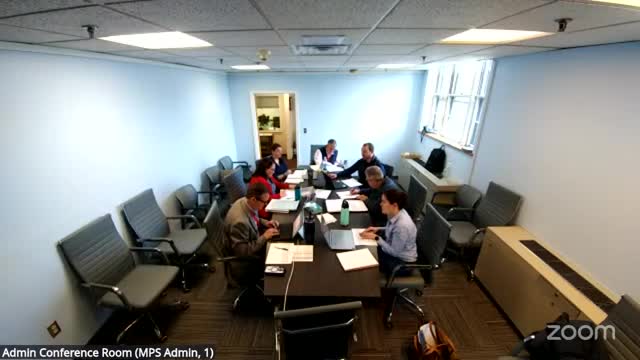Finance liaisons urge caution on spending special‑education tuition reserves; suggest phased reductions
March 19, 2025 | Marblehead Public Schools, School Boards, Massachusetts
This article was created by AI summarizing key points discussed. AI makes mistakes, so for full details and context, please refer to the video of the full meeting. Please report any errors so we can fix them. Report an error »

Liaison members discussed the district’s special‑education tuition‑in revolving account and the circuit‑breaker reserve, and debated whether the current balances should be spent down to reduce general‑fund requests.
Finance staff described the tuition‑in account as money the district receives for students placed here from other towns; the group noted that the account has carried a sizeable balance and that last year committee members hoped to use more of that balance for one‑time capital or program needs but did not. One member summarized the issue: “We could certainly take it down. Take a hundred thousand that next year out of the budget,” but cautioned that tuition and placements can change quickly.
Committee members repeatedly emphasized the risk of sudden out‑of‑district placements and state funding shortfalls, recalling a prior fiscal crisis caused by lower‑than‑expected circuit‑breaker reimbursements. A liaison said that the circuit‑breaker reserve is intended to protect the district from sudden mandated costs for out‑of‑district placements and recommended keeping a prudent contingency. Several members suggested reducing the tuition‑in balance gradually — for example, lowering it toward a $100,000 floor — rather than spending a large lump sum in a single year.
Ending: Staff agreed to propose a phased plan to use a portion of the tuition‑in balance to offset near‑term general‑fund needs while preserving a circuit‑breaker contingency to protect against sudden mandated special‑education costs.
Finance staff described the tuition‑in account as money the district receives for students placed here from other towns; the group noted that the account has carried a sizeable balance and that last year committee members hoped to use more of that balance for one‑time capital or program needs but did not. One member summarized the issue: “We could certainly take it down. Take a hundred thousand that next year out of the budget,” but cautioned that tuition and placements can change quickly.
Committee members repeatedly emphasized the risk of sudden out‑of‑district placements and state funding shortfalls, recalling a prior fiscal crisis caused by lower‑than‑expected circuit‑breaker reimbursements. A liaison said that the circuit‑breaker reserve is intended to protect the district from sudden mandated costs for out‑of‑district placements and recommended keeping a prudent contingency. Several members suggested reducing the tuition‑in balance gradually — for example, lowering it toward a $100,000 floor — rather than spending a large lump sum in a single year.
Ending: Staff agreed to propose a phased plan to use a portion of the tuition‑in balance to offset near‑term general‑fund needs while preserving a circuit‑breaker contingency to protect against sudden mandated special‑education costs.
View full meeting
This article is based on a recent meeting—watch the full video and explore the complete transcript for deeper insights into the discussion.
View full meeting
